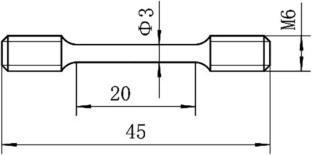A Cu-Cr-Zr-RE Alloy with High Properties Produced by Practical Non-vacuum Smelting and Thermomechanical Treatment
Abstract
A Cu-0.69Cr-0.08Zr-0.07RE alloy was produced using practical non-vacuum smelting and one-pass hot and cold extruding. Refined primary grains and evenly distributed Cr and Zr were obtained in as-cast alloy because of high cooling rate. The grains were gradually refined under three-direction compressive stress and shear strain during hot and cold extruding with large deformation of near 90%. Ultrafine grains, high density of dislocations and nano-precipitates were obtained after solid solution, cold extruding and aging. Dislocations contribute most, nano-precipitates come in second and grain boundaries last to the strength. The number and even distribution of nano-precipitates were promoted by the increased saturability of Cr and Zr atoms in copper matrix and promoted decomposition of the supersaturated copper matrix. High density of dislocations was retained and their interaction with boundaries/sub-boundaries and nano-precipitates still functioned under higher aging temperature. This gave the alloy high tensile strength of 669 MPa and 642 MPa after aging at 425 °C and 500 °C, respectively, for 1.8 h. The strength decrement was mainly caused by growth of the nano-precipitates. Conductivity higher than 72%IACS was obtained in aged alloys. The residual resistance of the low-temperature aged alloy was mainly caused by nano-precipitates, and the residual Cr and Zr elements dissolved in the matrix.


 求助内容:
求助内容: 应助结果提醒方式:
应助结果提醒方式:


